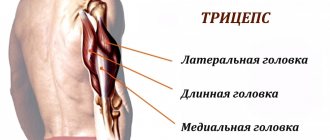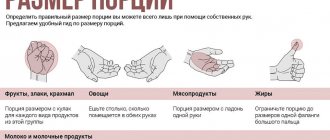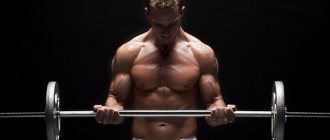Nutrition
Let me start with the fact that a powerlifter, just like any other athlete, must have an optimal diet. If you don't stick to a strict diet, you simply won't be able to perform at your best level. Junk Food Junk food is where many athletes stumble. But listen: you don't want to feel like crap. Believe me, one of the most important things in life is the opportunity to taste and enjoy good food. Just limit yourself to holidays and other special events.
Protein
Protein is just as important in powerlifting as it is in bodybuilding. Protein is used in the repair of tissue damaged during training. Bodybuilding is worth paying due attention to, even if you don't care about your own physique. The more muscle tissue you have, the more force you can apply during an exercise, the more weight you can handle. I advise you to take as much protein as you can: up to 400-500 g per day. At the very least, try to consume at least 1 g of protein per 1 kg of body weight.
Diet
There are several ways to create a diet for a powerlifter (based on the percentage of macronutrients such as proteins, carbohydrates, fats in total calories). First: a high carbohydrate, low fat diet (40% carbohydrates, 40% protein, 10% fat). With carbohydrates, you will have extremely high energy levels and therefore be in a constant state of anabolism. Thus, there will be no glycogen deficiency in the muscles. The best sources of carbohydrates are vegetables, oats, brown rice, wheat bread and pasta, bran and cereals. However, try not to eat a lot of carbohydrates a couple of hours before bed - they can be stored as fat. Another type of diet: high fat and low carbohydrate (30-40% fat, 40-50% protein, 10% carbohydrates). This diet is suitable for those who want to shake off fat. However, you should be careful if you choose this type of diet: there may be a situation where the low level of carbohydrates will trigger the depletion of glycogen and water in the muscles, which will lead to loss of strength. The healthiest way for the body to obtain fat is from essential fatty acids (flax, rapeseed, olive oil). These foods don't taste the best, so if you can't stomach them, try eating more meat.
I. Protection and support of the musculoskeletal system
1. Growth hormone.
Personally, I think this is the #1 drug in powerlifting. No other supplement compares to GH in terms of its beneficial effects on joints and ligaments. Lifters are also lucky in that there is no need to use high (building) doses. 4 - 6 IU per day or every other day is more than.
It is advisable to take somatotropin on an ongoing basis. Or courses of 4 months with a break of a month and a half. I STRONGLY recommend not to go above 6 IU per day. Or the pitfalls of this medicine will begin to emerge, which have no use in lifting at all. As an example, GH at a dosage of 10 IU per day will sooner or later lead to partial stiffening of the joints. This is especially true for elbows and shoulders. You don't need it. Accordingly, use it wisely, and you will be happy.
2. Dexamethasone.
This is a synthetic glucocorticosteroid. It must be admitted that it extremely quickly eliminates inflammatory processes in ligaments and joints, and also strengthens them. But, only with proper use. And this is correct: the duration of the Dexa course is no more than three weeks in a row. It's better to limit yourself to two. The break between courses must correspond to the course itself. The daily dosage is no more than two tablets (0.5 mg in one) twice - in the morning and in the evening.
Keep in mind that in Dexa's case, more is worse. Side effects begin to creep in from all sides. And Dexa has a wagon and a cart of them. The drug can inhibit the production of your own Testosterone - this must be taken into account when using it. Also, Dexa significantly weakens the effect of GH, Insulin, Antihypertensive drugs, Antibacterial drugs. Negatively affects the thyroid and pancreas glands. Weakens the immune system. If you overdo the dose, it can soften ligaments and intensify the development of osteoporosis. Athletes from lighter categories may experience a pronounced increase in body weight. And it will DEFINITELY not be muscles. Be careful. Dexamethasone is as effective as it is dangerous.
3. Nandrolone.
There are also those who cannot afford GH due to the high cost, and are afraid to use Dexamethasone. Only Nandrolone remains. This speaker has two extremely unpleasant disadvantages. Firstly, its final metabolites are not eliminated from the body for a VERY long time. If in the future you happen to undergo additional control, then forget Nandrolone forever. Secondly, this AS extremely upsets the Hypothalamus-Pituitary-Testes arc and it will take a long time to recover. If these two troubles do not scare you, then feel free to take Nandrolone. This is the only AC that not only anesthetizes joints for the duration of the course, but has a strengthening and restorative effect on them.
Supplements containing Glucosamine with Chondroitin. Make it a rule. If you regularly train with heavy working weights, and even more so compete in strength competitions, then these products MUST be present in your diet throughout the ENTIRE year. No options. Progress does not stand still and it is foolish to deny the obvious. This sport has REALLY proven its effectiveness, but only with systematic use.
Sports supplements
Today there are a huge number of varieties of sports nutrition on the market. What to choose? I have some good advice - stick to the basics. Protein, chondroitin, and possibly creatine are the only supplements worth investing time, energy, and money into as a powerlifter.
Glutamine
The effects of this supplement are quite inconsistent: for some it really works, for others it doesn’t. Try it and see how it affects your results.
Creatine
When consuming creatine, stick to the following scheme: 4-5 weeks of loading and 4-5 weeks of rest, because after about a month tolerance to this type of nutrition develops and the athlete stops experiencing growth.
The use of Boldenone in powerlifting and bodybuilding
Boldenone is a powerful steroid with relatively low androgenic activity. Helps increase strength and endurance. Provided proper nutrition and a sufficient amount of protein, it allows you to gain up to five to six kilograms of muscle mass per course. Depending on the individual characteristics of the athlete, dosages may vary.
The drug is often used in conjunction with other hormonal drugs. It is not uncommon for athletes to take two or three steroids at the same time. The course of “Turinabol” and “Boldenone” is popular: it allows you to gain a sculpted body, as it promotes not only the gain of muscle mass, but also the burning of subcutaneous fat.
Steroid No. 4: Sustanon-250
Sustanon-250 consists of four esters of the male hormone with different half-lives.
This allows him to quickly get into work and maintain high anabolism for a long time. The drug perfectly builds muscle mass and improves physical performance. This is a powerful anabolic steroid and novice athletes should hold off on using it. But experienced athletes can enjoy its strength. The optimal weekly doses of the drug are in the range from 0.25 to 0.5 g. The duration of use should not exceed sixty days (two months). To enhance the effectiveness of the Sustanon-250 cycle, you can use other AAS. The drug has excellent compatibility.
The importance of vitamins for bodybuilding
Any professional athlete will tell you that without a sufficient amount of vitamins it is simply impossible to achieve any significant effect in bodybuilding. To compensate for the deficiency, athletes use special vitamin-mineral complexes and various other sports supplements.
Any person involved in athletics should eat a diet that is high in calories and contains sufficient amounts of micronutrients. The athlete’s diet is quite large in volume, so it does not allow him to eat as many fruits, which contain the required amount of vitamins. And you can simply get an upset stomach if you eat too much fruit. Therefore, an excellent alternative to a fruit set is the use of special complexes.
Why do you need equipment?
Initially, the appearance of special clothing and equipment for powerlifting was justified by the need to prevent injuries and the desire to increase the working weight by 5-10 kg in each exercise.
Modern equipment has significantly expanded its capabilities: now an athlete, thanks to the right choice of clothing and accessories, can increase weight by an average of 50 kg in each exercise, and the maximum figure reaches 150 kg. Thanks to such equipment, powerlifting has become even more spectacular.
Powerlifting equipment includes wrist and knee wraps, squat suit, bench press tights, bench press shirt, deadlift suit and special shoes (deadlift boots, weightlifting shoes).
Equipment is not just clothing for training, it is clothing, shoes and additional devices that are used during lifting and are approved by federations for use during competitions. The main purpose of powerlifting equipment is to prevent injury when lifting heavy weights, as well as to help the athlete during the exercise.
Equipment is divided according to the types of powerlifting exercises for which it is intended:
- Equipment for squats includes overalls (suit, tights) for squats, knee and wrist bandages, belt and weights.
- Equipment for an effective bench press is a wrestling pad (shirt, tank top), wrist wraps and weights.
- Equipment for deadlifting - overalls (suit, tights) for deadlifting, belt, knee bandages and special shoes with rubber soles without heels. These shoes allow you to keep your weight on your heel and prevent you from leaning forward. As a rule, powerlifters use special deadlift boots, sneakers, shoes or wrestling shoes.
Why do you need special bench press shirts and shoes? Why can’t you train and perform in regular sneakers and a T-shirt? Let's take a closer look at the most important elements of powerlifting equipment.
Powerlifting stars
Over the years of the existence of powerlifting, a whole galaxy of bright representatives of this sport has formed. We can mention Konstantin Konstantinov, who was born in 1978 in the city of Liepaja (Latvia). This powerlifter took the champion position among juniors 4 times and 5 times among adults. This strongman is a six-time bench press champion. Konstantinov set more than a hundred records in his native country.
Zydrunas Savickas is another bright powerlifter who was born on July 5, 1975 in the city of Bizai (Lithuania). This man is one of the strongest people on the planet, he is a six-time champion of the World's Strongest Man tournament.
No less prominent representative of powerlifting is Evgeniy Yarymbash, who was born on April 9, 1983 in the town of Mangush (Ukraine). Holder of more than one hundred and fifty records. The athlete is a repeated champion in Europe and the world, twice won the Arnold Classic tournament and the Titans Super Cup.
General information about powerlifting
The name "powerlifting" is of English origin: powerlifting. In translation, it can be interpreted this way: power is translated as “strength” and lift means “to raise.” Powerlifting is a sport in which you need to overcome the heaviest weight (it is different for each athlete).
The history of powerlifting is quite long. It was based on exercises that were used by athletes to improve their own performance. It is worth noting that the initial set of exercises was significantly different from those that powerlifters use today. In addition to the now standard exercises, powerlifting also included biceps lifts and various presses. This sport became most popular in the 1940s and 1950s of the 20th century in the West. Beginning in the 1950s, powerlifting took on the form it has today. Closer to the 1960s, standards for holding competitions were formed, which have already become traditional and regular.
In 1972, the International Powerlifting Federation was founded, and soon the first tournament was organized and successfully held. At first it was a sport exclusively for men, but since 1980, women have also been actively involved in it. 1986 is the year the World Powerlifting Congress was founded. Soon, various powerlifting organizations began to appear, the number of which is increasing. It is significant that, starting from 1963, powerlifting belongs to the program of the Paralympic Games, but it is nominated as “weightlifting”, and since 1992 – powerlifting.
Powerlifting Performance Rules
Nowadays this sport has acquired new “colors”. The main discipline of modern powerlifting is considered triathlon. This includes a set of exercises, each of which must be performed in three approaches. In cases where an athlete is unable to lift the weight even once, he ceases to be a participant in the tournament. The regulatory framework for this sport is very serious. Very often, preference is given to high-repetition bench presses. In the USA, the Push-Pull subtype of biathlon, which includes bench press and deadlift, is becoming increasingly popular. Armlifting arose from powerlifting. Since today there are many organizations focused on powerlifting, there are enough subtypes of this sport. Some focus on the brightness of the show (WPO, NAP-HRS), others on tradition (IPF).
All tournaments are held in accordance with the rules of the International Federation, which clearly outline the general rules, the rules for arranging places for competitions, the necessary personal items of clothing, the correct performance of all exercises, and the conditions that, if not met, will result in disqualification for the participant. The rules also stipulate how to weigh yourself. It is clearly stated what responsibilities the judges, jury and technical committee have. Also in the rules you can find out the necessary conditions in order to register a world record.
II. Speeding up the recovery process
I will list AAS drugs from the most effective and onwards. But make no mistake. Any drug from the AAS class will DEFINITELY speed up your regeneration after iron loads. I will say something about other medications.
1. Methyltestosterone.
No competition. Do not exceed the daily dose of 50 mg. Although the performing lifters will only smile in response.
2. Testosterone.
Let's not chew. Everything is clear here without further ado. I will highlight Testosterone Suspension and Testosterone Propionate.
3. Methandrostenolone.
The leader among all AS in its ability to accelerate the restoration of Glycogen and Creatine phosphate in muscle tissue.
4. Drostanolone.
It is a derivative of DHT, famous for its restorative properties.
5. Turinabol.
Only slightly inferior to Drostanolone.
6. Oxandrolone.
Quickly brings the amount of Creatine back to normal. Plus, a good anti-catabolic. Both qualities combined—quick recovery.
7. Stanazolol.
The fact that this speaker was in last place is just my personal opinion.
I deliberately did not mention Trenbolone and Oxymetholone because people do not always respond well to them.
8. Insulin and/or IGF - 1.
In general, both drugs can be compared with AAS in this regard. But their use (in particular, Insulin injections immediately after training) requires a competent approach. They cost a lot (especially Factor) and have unpleasant side effects.
9. Actovegin.
Lately, for some reason, people have been saying all sorts of nasty things about this pharmaceutical drug. In my opinion, this is the best non-hormonal remedy for our purpose.
Accessories and diet for powerlifters
Accessories for powerlifting are divided into those that support the athlete’s body (increases pressure, thereby protecting from injury) and non-supporting ones.
The use of non-supportive accessories is mandatory when participating in official tournaments. Such equipment includes:
- special belt;
- a tight suit for this sport;
- t-shirt;
- long socks, leggings, shin guards (protect legs during deadlifts).
Additional accessories include:
- weightlifter;
- slippers;
- knee pads;
- wristbands.
Steroid #6: Tri-Trenbolone
This drug contains three Trenbolone esters and, having begun to affect the body almost immediately after administration, maintains an even and high anabolic background for a long time.
Tri-Trenbolone has powerful androgenic and anabolic effects. For this reason, it can be used both for gaining weight and for improving physical performance. In addition, this steroid is deprived of the ability to transform into female hormones, which avoids the accumulation of large amounts of water in the body. Thus, all the gained mass will be of very high quality. The optimal dose of Tri-Trenbolone is to use 0.3 to 0.4 grams per week. You can take the steroid for a couple of months.
For more information about the most powerful steroid Testosterone Enanatate, see here:











